Genetic Algorithm-Driven Surface-Enhanced Raman Spectroscopy Substrate Optimization
Abstract
:1. Introduction
2. Materials and Methods
2.1. SERS Substrate Optimization with the Genetic Algorithm
2.2. Electromagnetic Simulations
2.3. SERS Substrate Fabrication
2.4. Raman Spectroscopy Analysis
3. Results
3.1. Tuning the Parameters of the Genetic Algorithm
3.1.1. Population
3.1.2. Selection Function
3.1.3. Crossover Function
3.1.4. Elitism and Mutation Ratio
4. SERS Substrate Optimization
5. Experimental Analysis of the Optimized SERS Substrate
6. Discussion
7. Conclusions
Author Contributions
Funding
Institutional Review Board Statement
Data Availability Statement
Acknowledgments
Conflicts of Interest
Abbreviations
| FDTD | finite-difference time-domain |
| SERS | surface-enhanced Raman spectroscopy |
| GA | genetic algorithm |
| EF | enhancement Factor |
| MB | methylene blue |
| NS | nanostructure |
| EME | electromagnetic enhancement |
| CE | chemical enhancement |
References
- Kim, Y.; Jeong, S.; Jung, K.O.; Song, M.G.; Lee, C.; Chu, S.; Park, J.Y.; Cha, M.G.; Lee, S.G.; Jun, B.; et al. Simultaneous Detection of EGFR and VEGF in Colorectal Cancer Using Fluorescence-Raman Endoscopy. Sci. Rep. 2017, 7, 1035. [Google Scholar] [CrossRef]
- Efrima, S.; Zeiri, L. Understanding SERS of Bacteria. J. Raman Spectrosc. 2009, 40, 277–288. [Google Scholar] [CrossRef]
- Rusciano, G.; Sasso, E.; Capaccio, A.; Zambrano, N.; Sasso, A. Revealing membrane alteration in cells overexpressing CA IX and EGFR by Surface-Enhanced Raman Scattering. Sci. Rep. 2019, 9, 1–10. [Google Scholar]
- Guven, B.; Dudak, F.C.; Boyaci, I.H.; Tamer, U.; Ozsoz, M. SERS-based direct and sandwich assay methods for mir-21 detection. Analyst 2014, 139, 1141–1147. [Google Scholar] [CrossRef] [PubMed]
- Pyrak, E.; Krajczewski, J.; Kowalik, A.; Kudelski, A.; Jaworska, A. Surface Enhanced Raman Spectroscopy for DNA Biosensors—How Far Are We? Molecules 2019, 24, 4423. [Google Scholar] [CrossRef] [PubMed] [Green Version]
- Cialla, D.; März, A.; Böhme, R.; Theil, F.; Weber, K.; Schmitt, M.; Popp, J. Surface-Enhanced Raman Spectroscopy (SERS): Progress and Trends. Anal. Bioanal. Chem. 2012, 403, 27–54. [Google Scholar] [CrossRef]
- Pilot, R.; Signorini, R.; Durante, C.; Orian, L.; Bhamidipati, M.; Fabris, L. A Review on Surface-Enhanced Raman Scattering. Biosensors 2019, 9, 57. [Google Scholar] [CrossRef] [Green Version]
- Camargo, P.H.C.; Au, L.; Rycenga, M.; Li, W.; Xia, Y. Measuring the SERS Enhancement Factors of Dimers with Different Structures Constructed from Silver Nanocubes. Chem. Phys. Lett. 2012, 484, 304–308. [Google Scholar] [CrossRef] [Green Version]
- Elsayed, M.Y.; Gouda, A.M.; Ismail, Y.; Swillam, M.A. Silicon-Based SERS Substrates Fabricated by Electroless Etching. J. Light. Technol. 2017, 35, 3075–3081. [Google Scholar] [CrossRef]
- Le Ru, E.C.; Blackie, E.; Meyer, M.; Etchegoin, P.G. Surface Enhanced Raman Scattering Enhancement Factors: A Comprehensive Study. J. Phys. Chem. C 2007, 111, 1932–7447. [Google Scholar] [CrossRef]
- Rodrigues, D.C.; de Souza, M.L.; Souza, K.S.; dos Santos, D.P.; Andrade, G.F.S.; Temperini, M.L.A. Critical assessment of enhancement factor measurements in surface-enhanced Raman scattering on different substrates. Phys. Chem. Chem. Phys. 2015, 17, 1463–9076. [Google Scholar] [CrossRef] [PubMed] [Green Version]
- Cong, S.; Wang, Z.; Gong, W.; Chen, Z.; Lu, W.; Lombardi, J.R.; Zhao, Z. Electrochromic semiconductors as colorimetric SERS substrates with high reproducibility and renewability. Nat. Commun. 2019, 678, 1–10. [Google Scholar]
- Fang, Y.; Seong, N.H.; Dlott, D.D. Measurement of the Distribution of Site Enhancements in Surface-Enhanced Raman Scattering. Science 2008, 321, 388–392. [Google Scholar] [CrossRef]
- Svanberg, K. The method of moving asymptotes—a new method for structural optimization. Int. J. Numer. Methods Eng. 1987, 24, 359–373. [Google Scholar] [CrossRef]
- Khot, N.S. Algorithms Based on Optimality Criteria to Design Minimum Weight Structures. Eng. Optim. 1981, 5, 73–903. [Google Scholar] [CrossRef]
- Ohsaki, M. Genetic Algorithm for Topology Optimization of Trusses. Comput. Struct. 1995, 57, 219–225. [Google Scholar] [CrossRef]
- Zingg, D.W.; Nemec, M.; Pulliam, T.H. A Comparative Evaluation of Genetic and Gradient-Based Algorithms Applied to Aerodynamic Optimization. Eur. J. Comput. Mech. 2012, 17, 103–126. [Google Scholar] [CrossRef] [Green Version]
- Yu, Z.; Cui, H.; Sun, X. Genetic-algorithm-optimized wideband on-chip polarization rotator with an ultrasmall footprint. Opt. Lett. 2017, 42, 3093–3096. [Google Scholar] [CrossRef]
- Sanchis, L.; Håkansson, A.; López-Zanón, D.; Bravo-Abad, J.; Sánchez-Dehesa, J. Integrated Optical Devices Design by Genetic Algorithm. Appl. Phys. Lett. 2004, 84, 4460–4462. [Google Scholar] [CrossRef] [Green Version]
- Fu, P.H.; Lo, S.C.; Tsai, P.C.; Lee, K.L.; Wei, P.K. Optimization for Gold Nanostructure-Based Surface Plasmon Biosensors Using a Microgenetic Algorithm. ACS Photonics 2018, 5, 2320–2327. [Google Scholar] [CrossRef]
- Mitchell, M. An Introduction to Genetic Algorithms, 1st ed.; MIT Press: Cambridge, MA, USA, 1998. [Google Scholar]
- Guo, L.; Jackman, J.A.; Yang, H.H.; Chen, P.; Cho, N.J.; Kim, D.H. Strategies for enhancing the sensitivity of plasmonic nanosensors. Nano Today 2015, 10, 213–239. [Google Scholar] [CrossRef] [Green Version]
- Etchegoin, P.G.; Ru, E.C.L. Surface Enhanced Raman Spectroscopy: Analytical, Biophysical and Life Science Applications, 1st ed.; John Wiley & Sons, Ltd.: West Sussex, UK, 2010; pp. 1–37. [Google Scholar]
- Ding, S.Y.; You, E.M.; Tian, Z.Q.; Moskovits, M. Electromagnetic theories of surface-enhanced Raman spectroscopy. Chem. Soc. Rev. 2017, 46, 4042–4076. [Google Scholar] [CrossRef]
- Li, M.; Qiu, Y.; Fan, C.; Cui, K.; Zhang, Y.; Xiao, Z. Design of SERS nanoprobes for raman imaging: Materials, critical factors and architectures. Acta Pharm. Sin. B 2018, 8, 381–389. [Google Scholar] [CrossRef]
- Lipowski, A.; Lipowska, D. Roulette-wheel selection via stochastic acceptance. Phys. A Stat. Mech. Appl. 2012, 391, 2193–2196. [Google Scholar] [CrossRef] [Green Version]
- Fang, Y.; Li, J. Advances in Computation and Intelligence; Springer: Berlin, Germany, 2010; pp. 181–192. [Google Scholar]
- Hasançebi, O.; Erbatur, F. Evaluation of crossover techniques in genetic algorithm based optimum structural design. Comput. Struct. 2000, 78, 0045–7949. [Google Scholar] [CrossRef]
- Ahn, C.W.; Ramakrishna, R.S. Elitism-based compact genetic algorithms. IEEE Trans. Evol. Comput. 2003, 7, 367–385. [Google Scholar]
- Schmitt, L.M. Theory of genetic algorithms. Theor. Comput. Sci. 2001, 259, 1–61. [Google Scholar] [CrossRef] [Green Version]
- Parker, J.H.; Feldman, D.W.; Ashkin, M. Raman Scattering by Silicon and Germanium. Phys. Rev. 1967, 155, 712–714. [Google Scholar] [CrossRef]
- Smith, E.; Dent, G. Modern Raman Spectroscopy—A Practical Approach, 2nd ed.; John Wiley & Sons, Ltd.: West Sussex, UK, 2019; pp. 1–21. [Google Scholar]
- Li, C.; Huang, Y.; Lai, K.; Rasco, B.; Fan, N. Analysis of Trace Methylene Blue in Fish Muscle using Ultra-Sensitive Surface-Enhanced Raman Spectroscopy. Food Control 2016, 65, 99–105. [Google Scholar] [CrossRef]
- Pan, Y.; Christiansen, R.E.; Michon, J.; Hu, J.; Johnson, S.G. Topology optimization of surface-enhanced Raman scattering substrates. Appl. Phys. Lett. 2021, 119, 1–6. [Google Scholar] [CrossRef]
- Xu, Y.; Konrad, M.P.; Trotter, J.L.; McCoy, C.P.; Bell, S.E.J. Rapid One-Pot Preparation of Large Freestanding Nanoparticle-Polymer Films. Small 2017, 13, 1602163. [Google Scholar] [CrossRef] [PubMed] [Green Version]
- Khlebtsov, B.N.; Khanadeev, V.A.; Panfilova, E.V.; Bratashov, D.N.; Khlebtsov, N.G. Gold Nanoisland Films as Reproducible SERS Substrates for Highly Sensitive Detection of Fungicides. ACS Appl. Mater. Interfaces 2015, 7, 6518–6529. [Google Scholar] [CrossRef]
- Kochylas, I.; Gardelis, S.; Likodimos, V.; Giannakopoulos, K.P.; Falaras, P.; Nassiopoulou, A.G. Improved Surface-Enhanced-Raman Scattering Sensitivity Using Si Nanowires/Silver Nanostructures by a Single Step Metal-Assisted Chemical Etching. Small 2021, 11, 1760. [Google Scholar]
- So, S.; Mun, J.; Rho, J. Simultaneous Inverse Design of Materials and Structures via Deep Learning: Demonstration of Dipole Resonance Engineering Using Core–Shell Nanoparticles. ACS Appl. Mater. Interfaces 2019, 11, 24264–24268. [Google Scholar] [CrossRef] [PubMed]
- Jafar-Zanjani, S.; Inampudi, S.; Mosallaei, H. Adaptive Genetic Algorithm for Optical Metasurfaces Design. Sci. Rep. 2018, 8, 1–16. [Google Scholar] [CrossRef]
- Yang, H.; Cao, X.; Yang, F.; Gao, J.; Xu, S.; Li, M.; Chen, X.; Zhao, Y.; Zheng, Y.; Li, S. A Programmable Metasurface with Dynamic Polarization, Scattering and Focusing Control. Sci. Rep. 2016, 6, 1–11. [Google Scholar] [CrossRef] [Green Version]
- Egorov, V.; Eitan, M.; Scheuer, J. Genetically Optimized All-Dielectric Metasurfaces. Opt. Express 2017, 25, 2583–2593. [Google Scholar] [CrossRef] [Green Version]
- Sui, S.; Ma, H.; Wang, J.; Pang, Y.; Feng, M.; Xu, Z.; Qu, S. Absorptive Coding Metasurface for Further Radar Cross Section Reduction. J. Phys. D Appl. Phys. 2018, 51, 065603. [Google Scholar] [CrossRef]
- Liu, Z.; Zhu, D.; Rodrigues, S.P.; Lee, K.T.; Cai, W. Generative Model for the Inverse Design of Metasurfaces. Nano Lett. 2018, 18, 6570–6576. [Google Scholar] [CrossRef] [Green Version]
- Jiang, J.; Fan, J.A. Global Optimization of Dielectric Metasurfaces Using a Physics-Driven Neural Network. Nano Lett. 2019, 19, 5366–5372. [Google Scholar] [CrossRef] [Green Version]
- Mikac, L.; Ivanda, M.; Gotic, M.; Janicki, V.; Zorc, H.; Janci, T.; Vidacek, S. Surface-enhanced Raman spectroscopy substrate based on Ag-coated self-assembled polystyrene spheres. J. Mol. Struct. 2017, 1146, 530–535. [Google Scholar] [CrossRef]
- Cinel, N.; Cakmakyapan, S.; Butun, S.; Ertas, G.; Ozbay, E. E-Beam Lithography Designed Substrates for Surface Enhanced Raman Spectroscopy. Photonics Nanostruct. Fundam. Appl. 2015, 15, 109–115. [Google Scholar] [CrossRef] [Green Version]
- Mosier-Boss, P.A. Review of SERS Substrates for Chemical Sensing. Nanomaterials 2017, 7, 142. [Google Scholar] [CrossRef] [PubMed] [Green Version]
- Quaresma, P.; Osório, I.; Dória, G.; Carvalho, P.A.; Pereira, A.; Langer, J.; Araújo, J.P.; Pastoriza-Santos, I.; Liz-Marzán, L.M.; Franco, R.; et al. Star-shaped magnetite@gold nanoparticles for protein magnetic separation and SERS detection. RSC Adv. 2014, 4, 3659–3667. [Google Scholar] [CrossRef]
- Sharma, B.; Frontiera, R.R.; Henry, A.I.; Ringe, E.; Duyne, R.P.V. SERS: Materials, applications, and the future. Mater. Today 2012, 15, 16–25. [Google Scholar] [CrossRef]
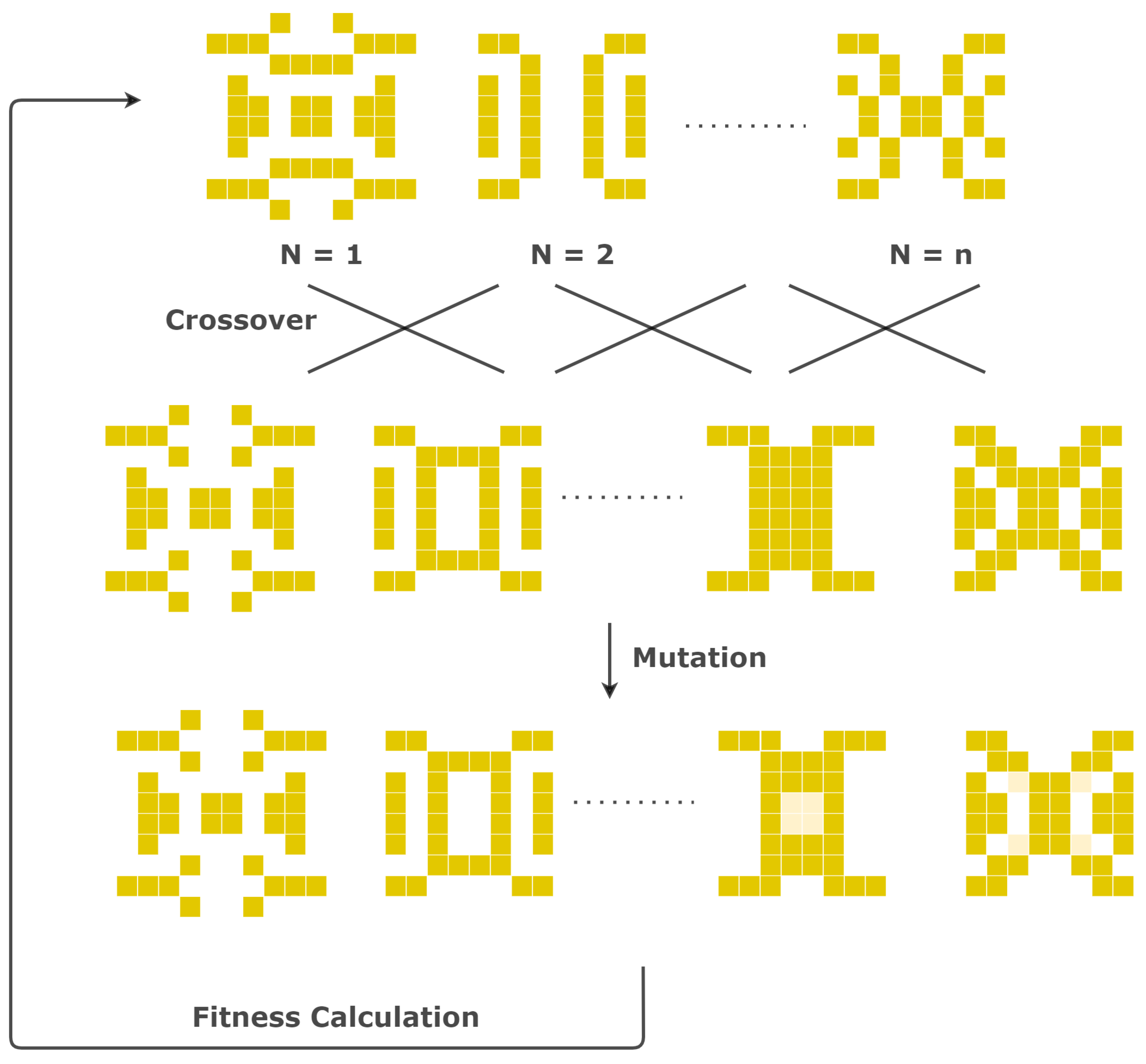
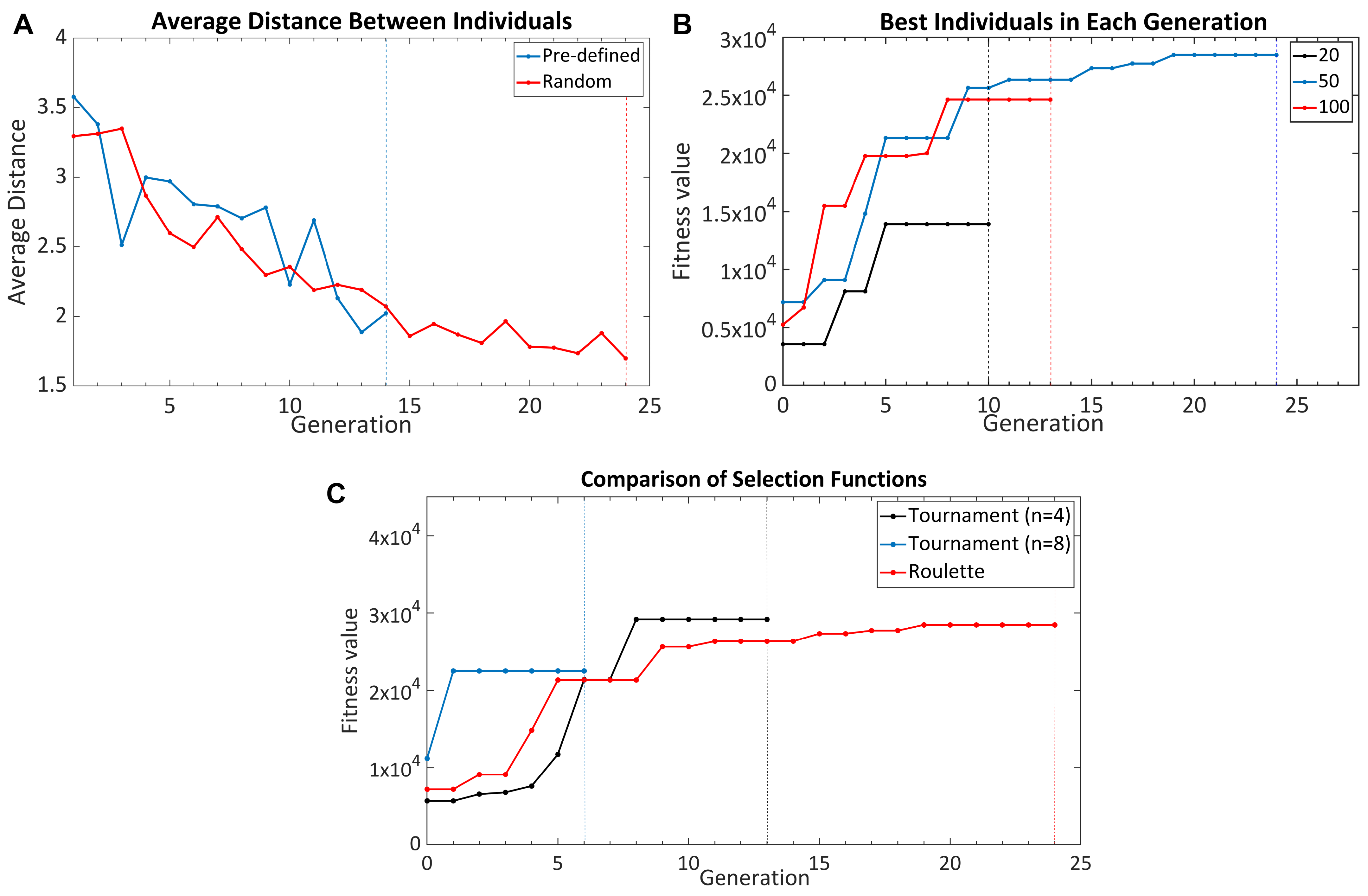
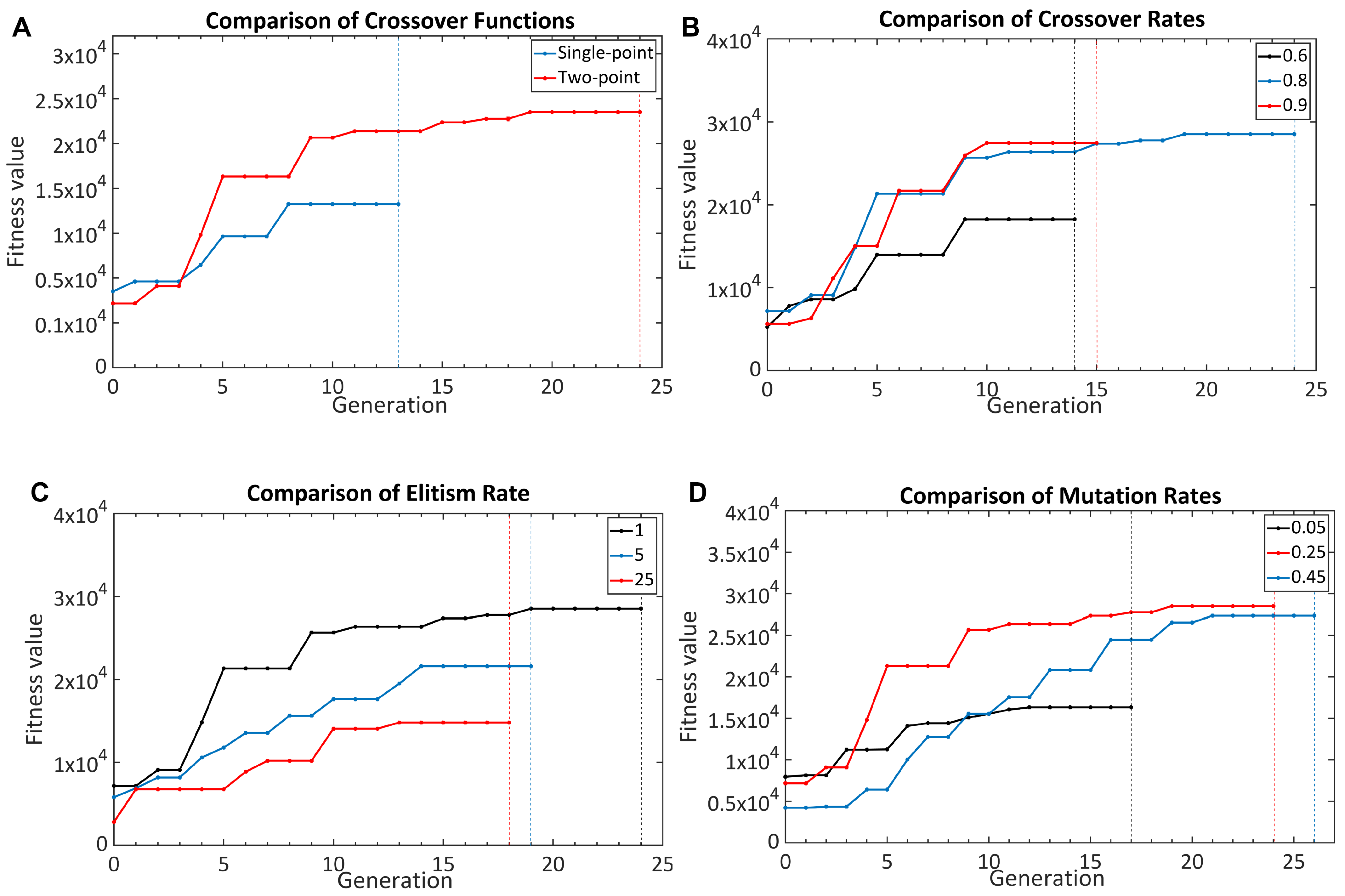

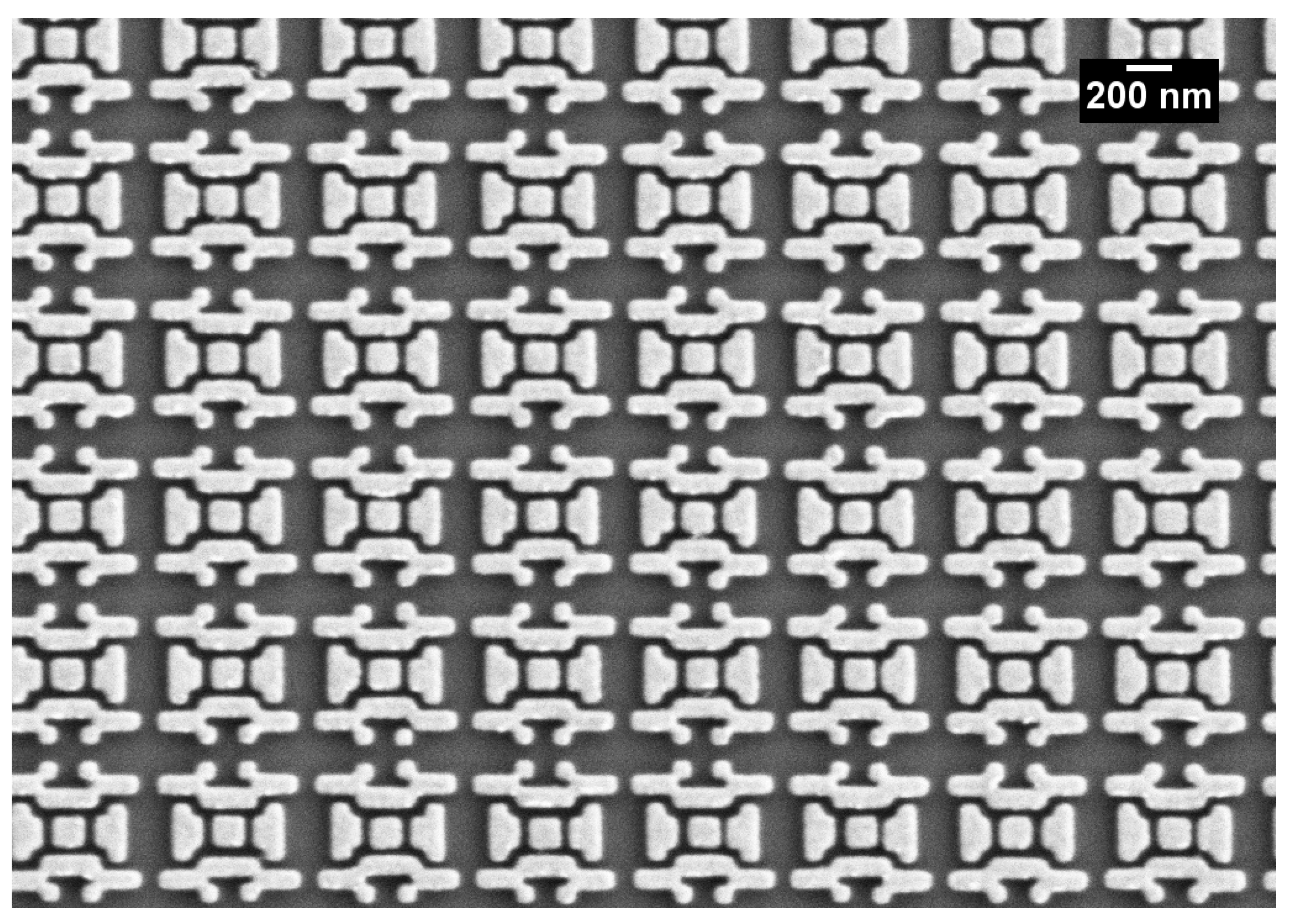
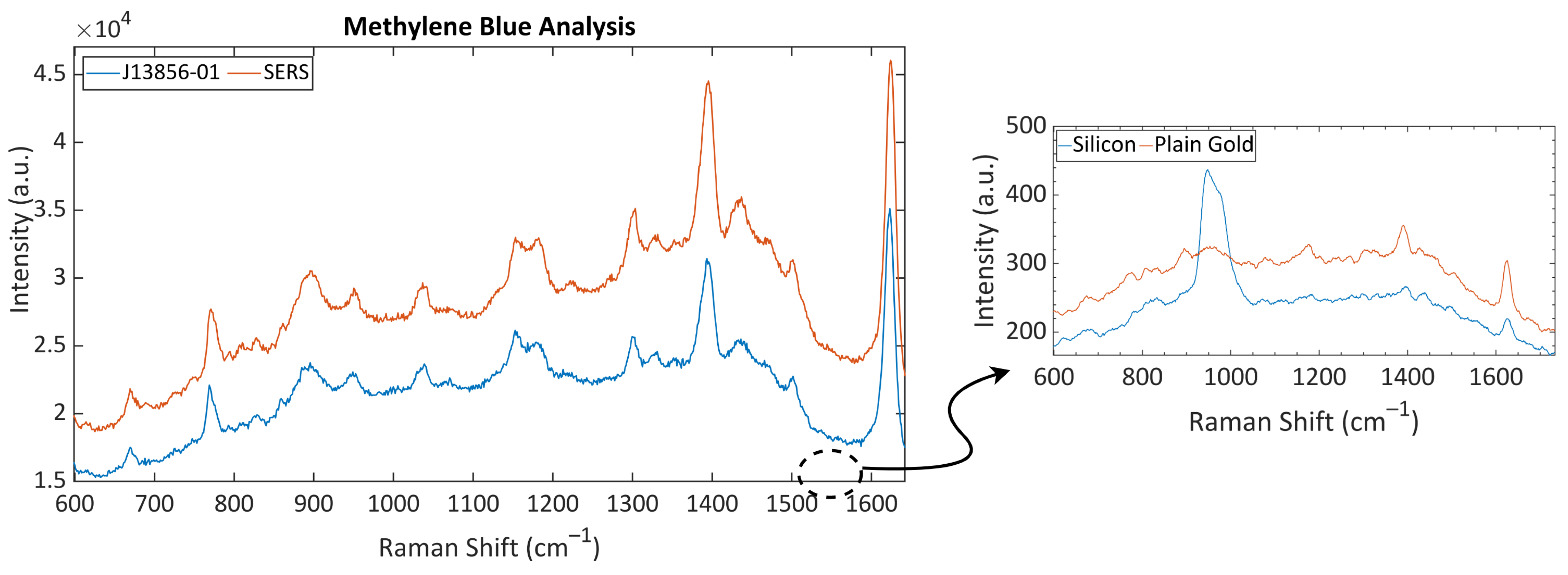
| Silicon (cm−1) | Plain Gold (cm−1) | SERS (cm−1) | Band Assignment [33] |
|---|---|---|---|
| - | 676 (w) | 683 (w) | Out-of-plane bending of C–H |
| - | 773 (w) | 774 (m) | In-plane bending of C–H |
| - | 895 (w) | 896 (m) | In-plane bending of C–H |
| - | - | 1033 (w) | In-plane bending of C–H |
| - | 1178 (w) | 1170 (m) | Stretching of C–N |
| - | - | 1299 (m) | In-plane ring deformation of C–H |
| - | - | 1331 (m) | In-plane ring deformation of C–H |
| - | 1389 (m) | 1389 (s) | Symmetrical stretching of C–N |
| - | 1427 (w) | 1431 (m) | Asymmetrical stretching of C–N |
| 1626 (w) | 1625 (m) | 1623 (s) | Ring stretching of C–C |
| Ref. | Method | Geometry | Figure of Merit | Wavelength |
|---|---|---|---|---|
| [38] | DNN | Core–Shell NP | Loss Function | - |
| [39] | GA | Metasurface | Reflection | 600 nm |
| [45] | GA | Metasurface | Transmission | 650–720 nm |
| [40] | GA | Metasurface | Polarization & Scattering | 1.5 m |
| [41] | GA | Metasurface | Transmission | 16.9–44.7 mm |
| [42] | GA | Metasurface | Absorption | - |
| [43] | GAN | Metasurface | Transmittance | 27.2 mm |
| [44] | GAN | Metasurface | Backpropagation efficiency | 580 & 1550 nm |
Publisher’s Note: MDPI stays neutral with regard to jurisdictional claims in published maps and institutional affiliations. |
© 2021 by the authors. Licensee MDPI, Basel, Switzerland. This article is an open access article distributed under the terms and conditions of the Creative Commons Attribution (CC BY) license (https://creativecommons.org/licenses/by/4.0/).
Share and Cite
Bilgin, B.; Yanik, C.; Torun, H.; Onbasli, M.C. Genetic Algorithm-Driven Surface-Enhanced Raman Spectroscopy Substrate Optimization. Nanomaterials 2021, 11, 2905. https://doi.org/10.3390/nano11112905
Bilgin B, Yanik C, Torun H, Onbasli MC. Genetic Algorithm-Driven Surface-Enhanced Raman Spectroscopy Substrate Optimization. Nanomaterials. 2021; 11(11):2905. https://doi.org/10.3390/nano11112905
Chicago/Turabian StyleBilgin, Buse, Cenk Yanik, Hulya Torun, and Mehmet Cengiz Onbasli. 2021. "Genetic Algorithm-Driven Surface-Enhanced Raman Spectroscopy Substrate Optimization" Nanomaterials 11, no. 11: 2905. https://doi.org/10.3390/nano11112905






